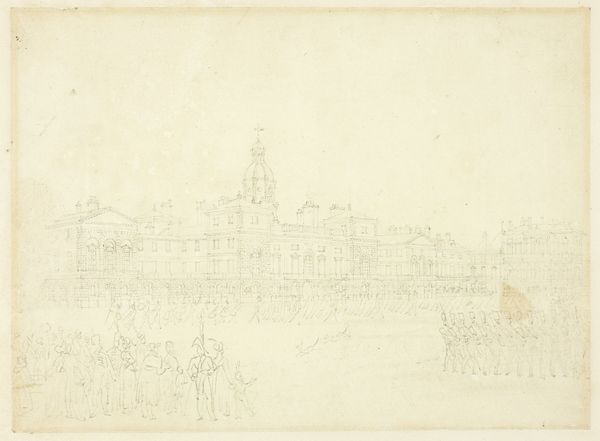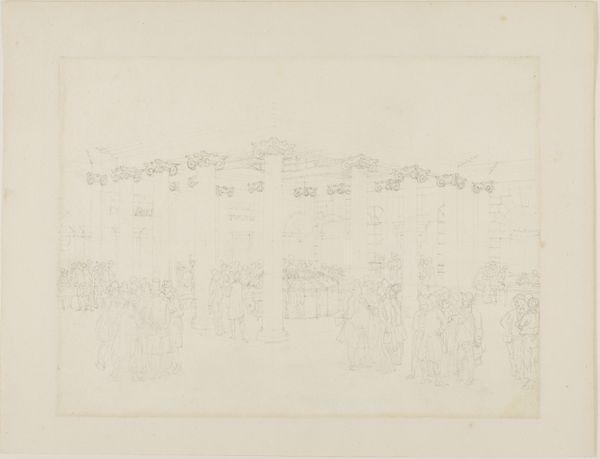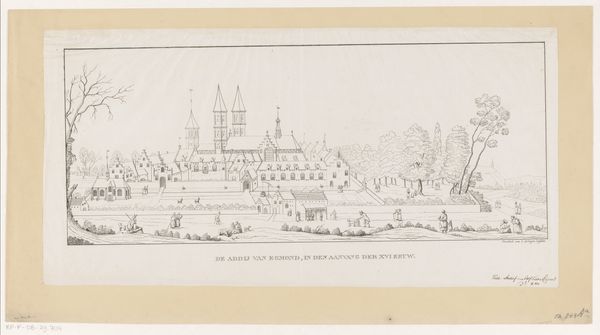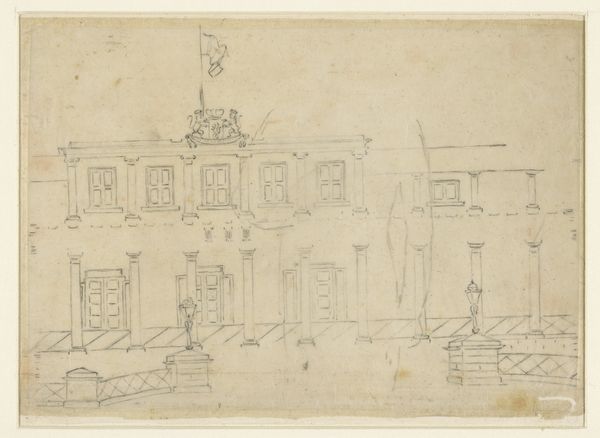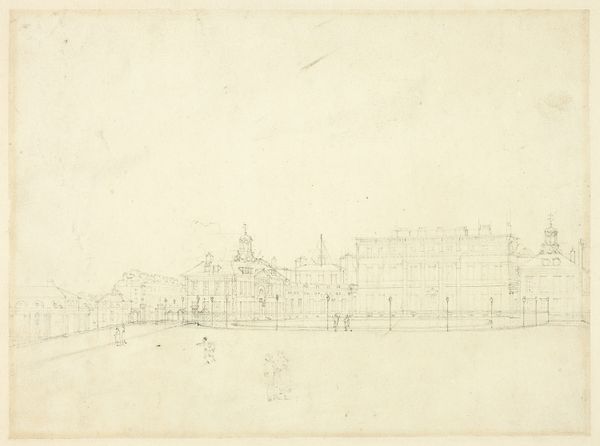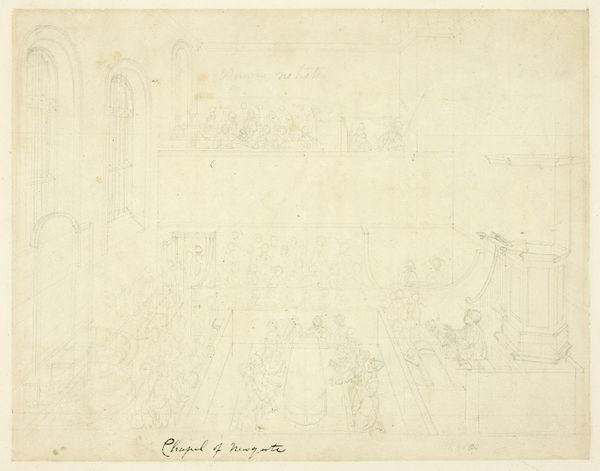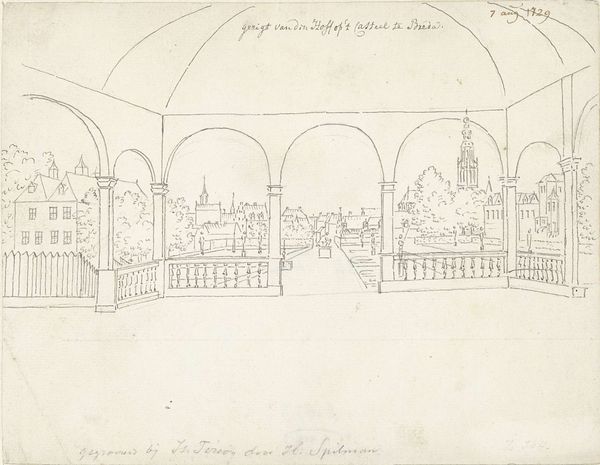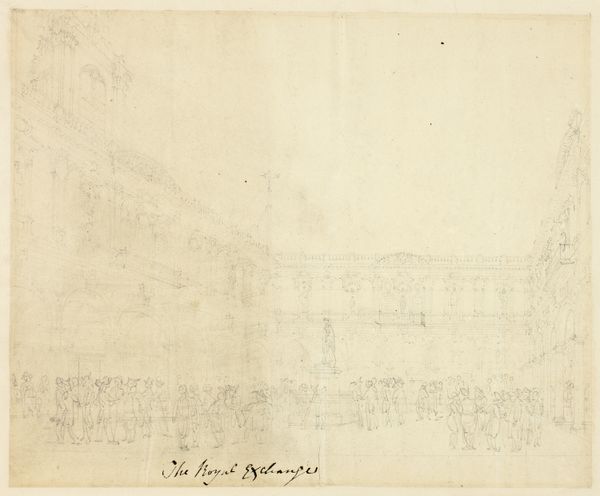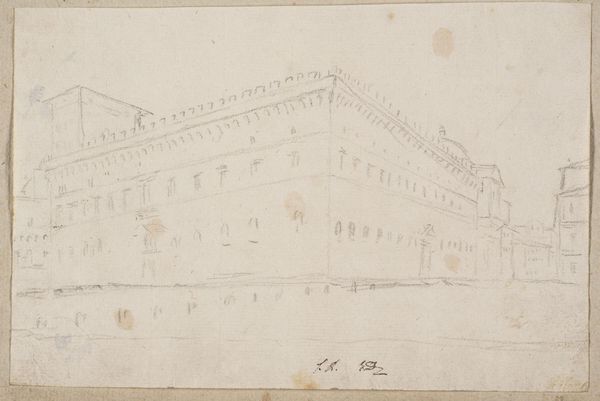
View of a Courtyard Surrounded by Buildings in Gothic Style with Central Clock Tower 1800 - 1900
0:00
0:00
drawing, print, etching, pencil
#
drawing
# print
#
etching
#
human-figures
#
landscape
#
etching
#
figuration
#
geometric
#
pencil
#
academic-art
Dimensions: sheet: 12 1/2 x 17 1/2 in. (31.8 x 44.5 cm)
Copyright: Public Domain
Curator: Look at this drawing titled, "View of a Courtyard Surrounded by Buildings in Gothic Style with Central Clock Tower." The piece, an etching done with pencil, is currently held at the Metropolitan Museum of Art, and dates somewhere between 1800 and 1900. What are your initial thoughts? Editor: Austere. The delicate etching work and muted tones contribute to a somewhat somber atmosphere. The courtyard seems rather deserted despite the presence of figures, leaving a distinct air of isolation. Curator: The composition, structured with meticulous detail, directs our gaze to the central clock tower. Note the repeating architectural elements – the arches, the chimneys – which create a rhythmic pattern. Semiotically, the tower is not just a functional component, but signifies time and control. Editor: Yes, but who is doing the controlling? It seems to me that the act of etching here becomes essential. The line work feels fragile and tentative. Pencil as the grounding base, if you will, for this fragile landscape of industry. There's a sense of laborious reproduction, perhaps even highlighting the social divisions inherent in a society governed by these rigid structures of time and space. Curator: An astute observation. Consider the artist's choice of Gothic style, reviving historical architectural forms and, therefore, past societal structures within this rendition. Editor: It's interesting to think about this being a proposed design. I'd even suggest the piece is not simply a detached depiction of Gothic ideals. It engages with the materials of labor. Who commissioned the artwork? Where would the raw materials have come from, and at what cost? I wonder what insights a socio-historical reading may grant here. Curator: The piece, in its own way, becomes an invitation to contemplate broader historical narratives interwoven in our relationship with spaces, art, and temporality. Editor: Agreed. This seemingly straightforward architectural rendering becomes remarkably intricate once we consider the implications behind production. It certainly prompts us to investigate and challenge pre-conceived notions.
Comments
No comments
Be the first to comment and join the conversation on the ultimate creative platform.
